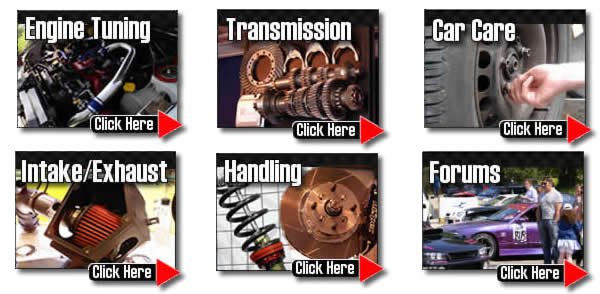Hyundai i10 Tuning
"Thank you for reading my i10 tuning guide."
Released in 2007 a replacement for the Atos was announced and the i10 was launched. It met with very positive reviews and won many awards including car of the year in 2014.
It has proven popular with millenials and we get asked about mods and upgrades for this fun car all the time so i've put together this guide to tuning the i10 and the mods you find work best on the engines offered.

The i10 is popular among our members for tuning projects We see many tuners wasting money on their i10 doing the wrong mods and then having to start over. Follow our tips to avoid making the common mistakes

Handling/Suspension upgrades
Improving the handling for car enthusiasts first priority in your i10 tuning project.
We found that most i10 factory suspension setups need tweaking, a few degrees of toe out (0.8 to 1.3) and some negative camber will dramatically improve your cornering and handling.
Drop the car by as much as 24mm - 38 mm and fit motorsport grade stiffer dampers, bigger drops will need other modifications in most instances.
Turning our attention to the i10's engine we need to get a bit more power out of the top end.
Smaller engines do not provide much of a return in terms of power so start with a bigger engine. Engine swaps are a good option if you have a small engine size.
Engine Tuning.
These mods modified parts are usually carried out by our members, decide how far you wish to go in your tuning project before you get started.
Getting the correct grade of performance mods for your planned usage of the car is a time and money saver. Stage 3 (competition) mods just won't work well on the road making the car difficult to drive.
- 1.0 L Kappa II I3 (petrol)
- 1.1 L Epsilon I4 (petrol)
- 1.2 L Kappa I4 (petrol)
- 1.1 L U-Line I3 (diesel)
From 2013 the lineup was revised
- 1.0 L Kappa II I3 (petrol)
- 1.0 L Kappa II I3 (petrol/LPG)
- 1.2 L Kappa II I4 (petrol)
- 1.1 L U-Line I3 (diesel)
Please watch our introduction Video tutorial to car tuning. Be sure to subscribe and support our new channel.
How to tune your car
- Improve the handling
Focus on Suspension improvements, such as coilovers and make sure the bushings are in good order and that the alignment is correct. Then focus on improving the brakes, with a big disk brake conversion kit and fast road brake pads.
- Remove restrictions
Focus on the intake and exhaust with filters being the common point of restriction in a tuned car. Intercoolers may also become restrictive on turbo engines so this may also need to be uprated.
- Burn more fuel & air
Increase the fuelling so it matches the air coming into the engine. The ratio is important so you need to improve the fuel pump and injectors, so the head mods, big valve conversions, fast road camshafts and forced induction upgrades extra supply of air is adequately met.
- Test and replace any weak parts
Weak areas are commonly the clutch, the turbocharger and pistons and crankshaft in a highly tuned engine. Makes sure these components will cope with your power aspirations.
- The Tune or Remap
A cars ECU controls the fuel, timing, spark and even the turbo in some cases, so to fully extract your gains you should remap the car last and this will fully release the power. Some cars are easy to map, and others require piggyback ECU's or aftermarket ECU's but this is the most vital step of your tuning project.
Modifying to Stage 1:
Remap, Suspension upgrade (drop 30-40mm), Alloy wheels, Lighter flywheel, Panel air filter, Sports exhaust.
Modifying to Stage 2:
fuel pump upgrades, Ported and polished head, high flow fuel injector, Fast road cam, Power/Sport clutch.
Modifying to Stage 3:
Engine balancing, Competition cam, Adding or upgrading forced induction (turbo/supercharger), Internal engine upgrades (pistons/head/valves), Sports gearbox.
Peak power is good on competition cars but for a daily driven car you need a long power band and perhaps extending the rev range.
The whole aim of our tips is to give a starting base of tuning modifications and point you in the right direction, our forum is where you can ask for more detailed advice and tips on your customized car project, the best performance kits and all aspects of modding cars.A fast road camshaft proves to be one of the best NASP power modifications you can do mechanically to your engine.
It maximises the intake and exhaust flow and pushes up the power if done right. Ideally you'd add other mods and finish up with a reflashed ECU. TorqueCars would caution you not to go with a motor sports profile cam as this upsets the engines idling and general town driving characteristics.Don't forget to uprate the fuelling when you are increasing the power - it makes the car more thirsty.
If you find you get flat spots and surges after your motorsport upgrades you should check the fuelling and try a higher octane fuel as well. Uprated injectors will enable you to supply sufficient fuel to the engine. Uprate the fuel pump to cope with the extra fuel requirements of your tuned i10s uprated injectors.
Intake and Exhaust Tuning.
The next area for modification is the intake and exhaust. Contrary to popular belief there is generally a small power gain to be had by fitting an induction kit, they only help and are recommended after you increase the engines power to the point where the standard air intake box cannot cope! Induction kits can work well on turbo engines and larger engines (if supplied with a suitable cold air feed or air box), generally though we'd just recommend for i10 engines you should go with a high performance panel air filter preferably made from cotton.
Do not go with the biggest exhaust you can find this will reduce the exhaust flow rate - the best exhausts for power gains are usually between 1.5 to 2.5 inches. It is the shape and material more than the bore size.
gas flowing the head will allow you to maximise your air/fuel charge. Leave this to a professional though with a proper flow bench and machine tools When you start tuning your i10 you will often find that the standard clutch starts to complain so get an uprated clutch. Turbo engines are just pleading to be remapped. You will see significant power gains on most modern turbochaged cars including diesels making a remap one of the most cost effective and significant modifications for your money.Despite the large cost involved adding forced induction to a NASP engine will give large power gains. Turbos are generally harder to add than a supercharger. With a turbo the power curve is related exponentially to the engine speed making it difficult to map fuelling with.
The nice directly proportional boost and rpm characteristics of the supercharger make them simpler to map. Decreasing the engines compression ratio will allow you to add forced induction, water injection may also help prevent detonation.
Alloy wheel upgrades.
Because alloys are less heavy they improve performance and they will help to cool the brake disks. Please note although they can look cool on the i10 big alloys will actually decrease your performance. The larger you go the lower your acceleration will be - this to the change in your effective final drive ratio.
For this reason aim to keep the overall rolling diameter of the wheel the recommended OEM sizes. In all cases without going bigger than 16 inches.
For more information on Tuning your car please join us in our friendly forum where you can discuss i10 options in more detail with our i10 owners. It would also be worth reading our unbiased Hyundai tuning articles to get a full grasp of the benefits and drawbacks of each modification.
Please help us improve these tips by sending us your feedback in the comments box below. We love to hear what our visitors have got up to and which mods work best for them on each model of car. Comments are used to improve the accuracy of these articles which are continually updated.
If you liked this page please share it with your friends, drop a link to it in your favourite forum or use the bookmarking options to save it to your social media profile.
Check out TorqueCars new YouTube channel, and see their awesome new content...
Feedback
Please use our forums if you wish to ask a tuning question, and please note we do not sell parts or services, we are just an online magazine.
Help us improve, leave a suggestion or tip
